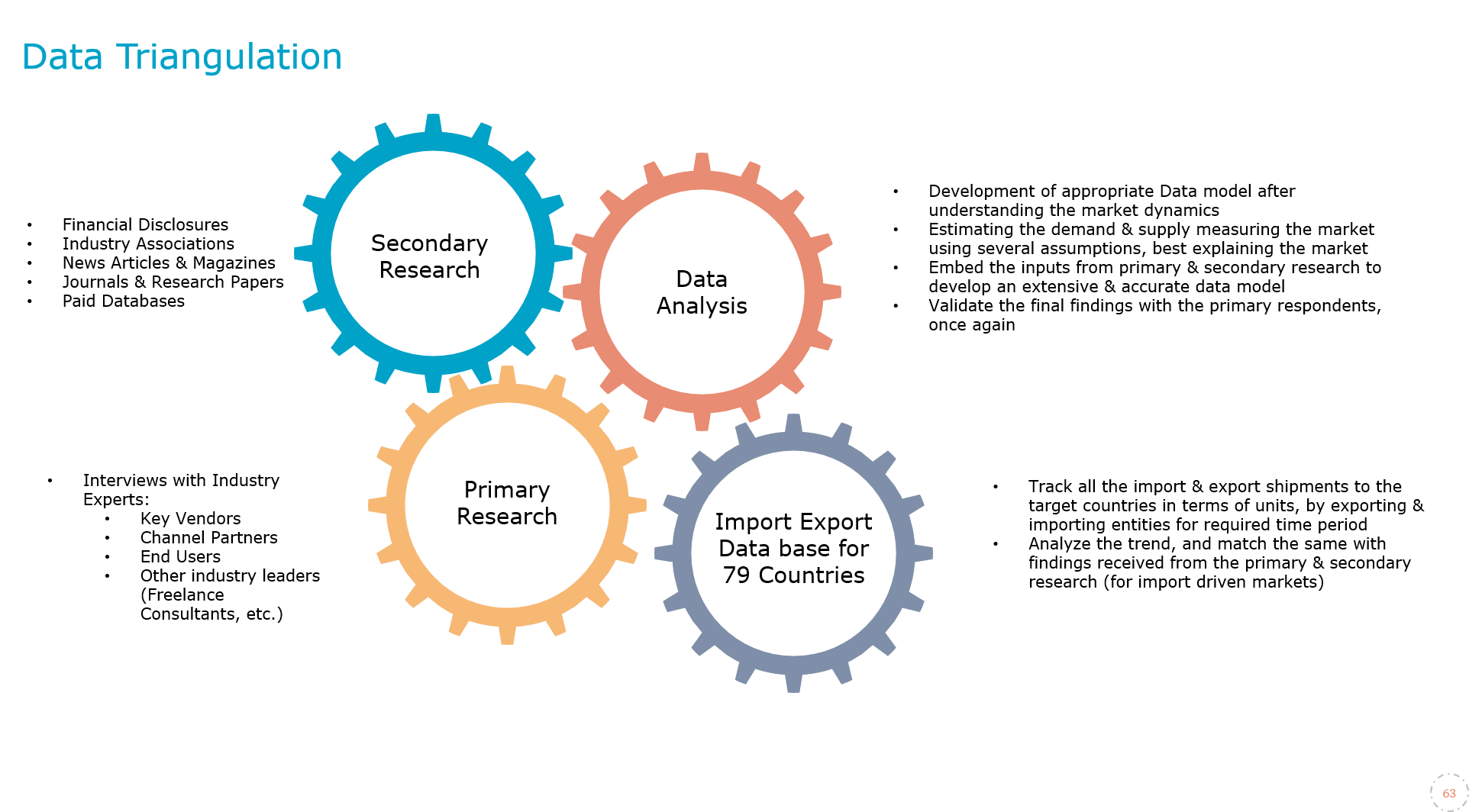
Global Feminine Hygiene Products Market Research Report: Forecast (2024-2030)
Feminine Hygiene Products Market- By Product Type (Menstrual Care (Sanitary Napkins/Pads, Tampons, Panty Liners, Menstrual Cups), Intimate Washes & Cleansing (Moisturizers & Creams..., Wipes, Spray, Others (Powder, Soap, Gel, etc)), Hair Removals (Razors, Strips & Wax, Trimmers & Epilators, Others)), By Distribution Channel (Supermarket & Hypermarket, E-Commerce, Department Store, Convenience Store, Retail Pharmacies), By Nature (Disposable, Reusable), and others Read more
- FMCG
- Jan 2024
- Pages 193
- Report Format: PDF, Excel, PPT
Market Insights & Analysis: Global Feminine Hygiene Products Market (2024-30):
The Global Feminine Hygiene Products Market size was valued at USD 25.53 Billion in 2022 and is projected to grow at a CAGR of around 5.7% during the forecast period, i.e., 2024-30. Most of the market expansion can be attributed to the growing awareness regarding the inevitable need for menstrual health & hygiene. This spreading awareness, stemming from women's empowerment, has called for more product advancements by manufacturers. With women being able to buy for themselves, the popularity of these products has skyrocketed and has positively influenced the demand for these products in recent years.
| Report Coverage | Details |
|---|---|
| Study Period | Historical Data: 2019-22 |
| Base Year: 2023 | |
| Forecast Period: 2024-30 | |
| CAGR (2024-2030) | 5.7% |
| Regions Covered | North America: US, Canada, Mexico |
| Europe: Germany, The UK, France, Spain, Italy, Rest of Europe | |
| Asia-Pacific: China, India, Japan, South Korea, Australia, Rest of Asia-Pacific | |
| South America: Brazil, Argentina, Rest of South America | |
| Middle East & Africa: GCC, South Africa, Rest of MEA | |
| Key Companies Profiled | Procter & Gamble, Kimberly-Clark Corporation, Johnson & Johnson, Unicharm Corporation, Essity AB, Kao Corporation, Daio Paper Corporation, Ontex Gr, Hengan International Group, Drylock Technologies, Natracare LLC, First Quality Enterprises, Inc., Others. |
| Market Value (2022) | USD 25.53 Billion |
As such, companies are compelled to focus their efforts on developing safer and easier-to-use hygiene products, particularly for women. They constantly invest in concepts, techniques, and materials to minimize allergic reactions and rashes. Besides, biodegradable materials have become a priority when considering resources. Safer & less toxic fragrance additives find application in biodegradable wipes, deodorizing products, and recyclable packaging more than ever. For instance,
- Bodywise (U.K.) Limited, through its Natracare product range, offers wipes, tampons, panty liners, and pads. Offered products are made of 100% organic cotton, sustainably sourced wood pulp, compostable bioplastic free from synthetic dyes, and certified vegan.
Global Feminine Hygiene Products Market Driver:
Ascending Literacy Levels Among Females Worldwide – Many surveys and studies have affirmed that feminine health and hygiene have improved with the growing literacy rate. As such, most women nowadays are concerned with hygiene and menstrual health. Besides, governments worldwide are emphasizing the education of girls to improve literacy rates, citing such direct links among these factors. In fact, these aspects have now become part of government administrative agendas, particularly in underdeveloped and developing countries. Thus, rising female literacy rates are likely to influence the feminine hygiene products market positively in the forthcoming years.

Global Feminine Hygiene Products Market Challenge:
Social Stigma Attached to Feminine Hygiene Products – Despite several government initiatives encouraging menstrual hygiene products, the population share exhibiting the adoption of hygienic products is relatively lower in developing countries. This behavior can be attributed to the stigma attached to the menstrual cycles and, on top of it, the prevailing ignorance related to the benefits of using sanitary napkins, making women resort to traditional and unsafe practices, which in turn, restricts the market growth for feminine hygiene products.
One major obstacle the feminine hygiene products industry must overcome is the persistent societal stigma attached to these necessary products. Cultural taboos and societal conventions continue to cloud conversations and perceptions of feminine hygiene, despite advancements in de-stigmatizing menstruation and promoting women's health. The marketing of these items is also impacted by this stigma, as the promotion of products is not easy in such a traditional form of social structure.
Global Feminine Hygiene Products Market Trend:
Waste Reduction Initiatives Prompting the Adoption of Reusable Menstrual Products – The adoption of biodegradable and reusable products is being largely encouraged to minimize the burden of waste generation due to single-use pads & tampons, and disposable deodorizing wipes. As per Plastic Oceans International, globally, nearly 45 billion menstrual product waste is generated every year, and on average, 4,125 plastic bags are being used by a pad user over a lifetime. Therefore, reusable menstrual cups and reusable period underwear and pads are a few of the solutions that are gaining attention in the feminine hygiene products segment for reducing waste generation.
Global Feminine Hygiene Products Market (2024-30): Segmentation Analysis
The Global Feminine Hygiene Products Market study of MarkNtel Advisors evaluates & highlights the major trends and influencing factors in each segment. It includes predictions for the period 2024–2030 at the global level. According to the analysis, the market has been further classified as:
Based on the Product Type:
- Menstrual Care
- Sanitary Napkins/Pads
- Tampons
- Panty Liners
- Menstrual Cups
- Intimate Washes & Cleansing
- Moisturizers & Creams
- Wipes
- Spray
- Others (Powder, Soap, Gel, etc.)
- Hair Removals
- Razors
- Strips & Wax
- Trimmers & Epilators
- Others
Menstrual Care Products acquired a prominent market share and are likely to prevail in the same trends during the forecast period. It owes principally to the inescapable need for menstrual care products demonstrated by women every month across the globe. This aspect has led to the mandatory adoption of such products, including sanitary pads, napkins, and tampons.
Moreover, several initiatives undertaken by governments, NGOs, and social workers to promote women’s overall well-being, including menstrual health, have encouraged market expansion over the historical period. For instance, in June 2020, the government of New Zealand proclaimed an investment of about USD 1.7 million to eradicate period poverty. Under this endeavor, free sanitary products will be provided to school girls nationwide.
Global Feminine Hygiene Products Market (2024-30): Regional Projections
Geographically, the Global Feminine Hygiene Products Market expands across:
- North America
- South America
- Europe
- The Middle East & Africa
- Asia-Pacific
Asia-Pacific has swiftly gained momentum in recent years and is anticipated to attain the fastest growth pace in the coming years. It owes predominantly to the intensifying awareness regarding feminine hygiene paired with increasing disposable incomes among women across the region. With more women entering the workforce, the need for odor-free sanitary napkins and deodorizing products has arisen. The change in lifestyles, resulting in the prevalence of PCOS among women, has also ignited a sudden interest in premium hygienic products. These aspects are likely to enthrall the Feminine Hygiene Products Market across the Asia-Pacific region.
In a bid to ensure product functionality and value-added features, market players are making rigorous efforts, which, in turn, has led to the advent of several new and innovative products in the female hygiene category. For instance, the leading manufacturer, Softex, came up with numerous value-added products over the past couple of years, including Softex Celana Menstruasi - sanitary towels in pant format.
Along similar lines, Sofy, one of the key players in China, introduced a new hybrid product in the category that uses proprietary Japanese technology and incorporates a body-warming function into the sanitary towel that extends to the lower abdomen for added comfort.
Global Feminine Hygiene Products Industry Recent Development:
- In October 2022: SABIC, a chemical industry giant, introduced certified circular polymers from SABIC’s TRUCIRCLE portfolio in manufacturing specialty films created for absorbent disposables developed by Drylock Technologies. Drylock has nodded the incorporation of these films for various absorbent hygiene applications, such as sanitary pads, panty liners, towels, and others.
- In August 2022: Mondi, a packaging MNC collaborated with hygiene and health company Essity and chemical firm Dow to launch recyclable secondary packaging. The new packaging products, made from renewable materials, contain mechanically recycled content from post-consumer material.
Gain a Competitive Edge with Our Global Feminine Hygiene Products Market Report
- Global Feminine Hygiene Products Market Report by MarkNtel Advisors provides a detailed & thorough analysis of market size & market share, growth rate, competitive landscape, and key players. This comprehensive analysis helps businesses gain a holistic understanding of market dynamics & make informed decisions.
- This report also highlights current market trends & future projections, allowing businesses to identify emerging opportunities & potential challenges. By understanding market forecasts, companies can align their strategies & stay ahead of the competition.
- Global Feminine Hygiene Products Market Report aids in assessing & mitigating risks associated with entering or operating in the market. By understanding market dynamics, regulatory frameworks, and potential challenges, businesses can develop strategies to minimize risks & optimize their operations.
Frequently Asked Questions
- Market Segmentation
- Introduction
- Product Definition
- Research Process
- Assumptions
- Executive Summary
- Global Feminine Hygiene Products Market Porters Five Forces Analysis
- Global Feminine Hygiene Products Market Trends & Insights
- Global Feminine Hygiene Products Market Dynamics
- Drivers
- Challenges
- Global Feminine Hygiene Products Market Growth Opportunities & Hotspots
- Global Feminine Hygiene Products Market Policy & Regulations
- Global Feminine Hygiene Products Market Analysis, 2019-2030F
- Market Size & Outlook
- Revenues (USD Million)
- Market Share & Outlook
- By Product Type
- Menstrual Care
- Sanitary Napkins/Pads
- Tampons
- Panty Liners
- Menstrual Cups
- Intimate Washes & Cleansing
- Moisturizers & Creams
- Wipes
- Spray
- Others (Powder, Soap, Gel, etc.)
- Hair Removals
- Razors
- Strips & Wax
- Trimmers & Epilators,
- Others
- Menstrual Care
- By Distribution Channel
- Supermarket & Hypermarket
- E-Commerce
- Department Store
- Convenience Store
- Retail Pharmacies
- By Nature
- Disposable
- Reusable
- By Region
- North America
- South America
- Europe
- The Middle East & Africa
- Asia-Pacific
- By Company
- Market Share
- Competition Characteristics
- By Product Type
- Market Size & Outlook
- North America Feminine Hygiene Products Market Analysis, 2019-2030F
- Market Size & Outlook
- Revenues (USD Million)
- Market Share & Outlook
- By Type
- By Distribution Channel
- By Nature
- By Country
- The US
- Canada
- Mexico
- The US Feminine Hygiene Products Market Analysis, 2019-2030F
- Market Size & Outlook
- Revenues (USD Million)
- Market Share & Outlook
- By Type
- By Distribution Channel
- Market Size & Outlook
- Canada Feminine Hygiene Products Market Analysis, 2019-2030F
- Market Size & Outlook
- Revenues (USD Million)
- Market Share & Outlook
- By Type
- By Distribution Channel
- Market Size & Outlook
- Mexico Feminine Hygiene Products Market Analysis, 2019-2030F
- Market Size & Outlook
- Revenues (USD Million)
- Market Share & Outlook
- By Type
- By Distribution Channel
- Market Size & Outlook
- Market Size & Outlook
- South America Feminine Hygiene Products Market Analysis, 2019-2030F
- Market Size & Outlook
- Revenues (USD Million)
- Market Share & Outlook
- By Type
- By Distribution Channel
- By Nature
- By Country
- Brazil
- Argentina
- Rest of South America
- Brazil Feminine Hygiene Products Market Analysis, 2019-2030F
- Market Size & Outlook
- Revenues (USD Million)
- Market Share & Outlook
- By Type
- By Distribution Channel
- Market Size & Outlook
- Argentina Feminine Hygiene Products Market Analysis, 2019-2030F
- Market Size & Outlook
- Revenues (USD Million)
- Market Share & Outlook
- By Type
- By Distribution Channel
- Market Size & Outlook
- Market Size & Outlook
- Europe Feminine Hygiene Products Market Analysis, 2019-2030F
- Market Size & Outlook
- Revenues (USD Million)
- Market Share & Outlook
- By Type
- By Distribution Channel
- By Nature
- By Country
- The UK
- Germany
- Italy
- France
- Spain
- Rest of Europe
- The UK Feminine Hygiene Products Market Analysis, 2019-2030F
- Market Size & Outlook
- Revenues (USD Million)
- Market Share & Outlook
- By Type
- By Distribution Channel
- Market Size & Outlook
- Germany Feminine Hygiene Products Market Analysis, 2019-2030F
- Market Size & Outlook
- Revenues (USD Million)
- Market Share & Outlook
- By Type
- By Distribution Channel
- Market Size & Outlook
- Italy Feminine Hygiene Products Market Analysis, 2019-2030F
- Market Size & Outlook
- Revenues (USD Million)
- Market Share & Outlook
- By Type
- By Distribution Channel
- Market Size & Outlook
- France Feminine Hygiene Products Market Analysis, 2019-2030F
- Market Size & Outlook
- Revenues (USD Million)
- Market Share & Outlook
- By Type
- By Distribution Channel
- Market Size & Outlook
- Spain Feminine Hygiene Products Market Analysis, 2019-2030F
- Market Size & Outlook
- Revenues (USD Million)
- Market Share & Outlook
- By Type
- By Distribution Channel
- Market Size & Outlook
- Market Size & Outlook
- The Middle East & Africa Feminine Hygiene Products Market Analysis, 2019-2030F
- Market Size & Outlook
- Revenues (USD Million)
- Market Share & Outlook
- By Type
- By Distribution Channel
- By Nature
- By Country
- GCC
- South Africa
- Rest of the Middle East & Africa
- GCC Feminine Hygiene Products Market Analysis, 2019-2030F
- Market Size & Outlook
- Revenues (USD Million)
- Market Share & Outlook
- By Type
- By Distribution Channel
- Market Size & Outlook
- South Africa Feminine Hygiene Products Market Analysis, 2019-2030F
- Market Size & Outlook
- Revenues (USD Million)
- Market Share & Outlook
- By Type
- By Distribution Channel
- Market Size & Outlook
- Market Size & Outlook
- Asia-Pacific Feminine Hygiene Products Market Analysis, 2019-2030F
- Market Size & Outlook
- Revenues (USD Million)
- Market Share & Outlook
- By Type
- By Distribution Channel
- By Nature
- By Country
- China
- India
- Japan
- South Korea
- Australia
- Rest of Asia-Pacific
- China Feminine Hygiene Products Market Analysis, 2019-2030F
- Market Size & Outlook
- Revenues (USD Million)
- Market Share & Outlook
- By Type
- By Distribution Channel
- Market Size & Outlook
- India Feminine Hygiene Products Market Analysis, 2019-2030F
- Market Size & Outlook
- Revenues (USD Million)
- Market Share & Outlook
- By Type
- By Distribution Channel
- Market Size & Outlook
- Japan Feminine Hygiene Products Market Analysis, 2019-2030F
- Market Size & Outlook
- Revenues (USD Million)
- Market Share & Outlook
- By Type
- By Distribution Channel
- Market Size & Outlook
- South Korea Feminine Hygiene Products Market Analysis, 2019-2030F
- Market Size & Outlook
- Revenues (USD Million)
- Market Share & Outlook
- By Type
- By Distribution Channel
- Market Size & Outlook
- Australia Feminine Hygiene Products Market Analysis, 2019-2030F
- Market Size & Outlook
- Revenues (USD Million)
- Market Share & Outlook
- By Type
- By Distribution Channel
- Market Size & Outlook
- Market Size & Outlook
- Global Feminine Hygiene Products Market Key Strategic Imperatives for Success & Growth
- Competitive Benchmarking
- Competition Matrix
- Product Portfolio
- Target Markets
- Target End Users
- Research & Development
- Strategic Alliances
- Strategic Initiatives
- Company Profiles (Business Description, Product Offering, Strategic Alliances or Partnerships, etc)
- Daio Paper Corporation
- Drylock Technologies
- Essity AB
- First Quality Enterprises, Inc.
- Hengan International Group
- Johnson & Johnson
- Kao Corporation
- Kimberly-Clark Corporation
- Natracare LLC
- Ontex Gr
- Procter & Gamble
- Unicharm Corporation
- Others
- Competition Matrix
- Disclaimer
MarkNtel Advisors follows a robust and iterative research methodology designed to ensure maximum accuracy and minimize deviation in market estimates and forecasts. Our approach combines both bottom-up and top-down techniques to effectively segment and quantify various aspects of the market. A consistent feature across all our research reports is data triangulation, which examines the market from three distinct perspectives to validate findings. Key components of our research process include:
1. Scope & Research Design At the outset, MarkNtel Advisors define the research objectives and formulate pertinent questions. This phase involves determining the type of research—qualitative or quantitative—and designing a methodology that outlines data collection methods, target demographics, and analytical tools. They also establish timelines and budgets to ensure the research aligns with client goals.
2. Sample Selection and Data Collection In this stage, the firm identifies the target audience and determines the appropriate sample size to ensure representativeness. They employ various sampling methods, such as random or stratified sampling, based on the research objectives. Data collection is carried out using tools like surveys, interviews, and observations, ensuring the gathered data is reliable and relevant.
3. Data Analysis and Validation Once data is collected, MarkNtel Advisors undertake a rigorous analysis process. This includes cleaning the data to remove inconsistencies, employing statistical software for quantitative analysis, and thematic analysis for qualitative data. Validation steps are taken to ensure the accuracy and reliability of the findings, minimizing biases and errors.

4. Data Forecast and FinalizationThe final phase involves forecasting future market trends based on the analyzed data. MarkNtel Advisors utilize predictive modeling and time series analysis to anticipate market behaviors. The insights are then compiled into comprehensive reports, featuring visual aids like charts and graphs, and include strategic recommendations to inform client decision-making









